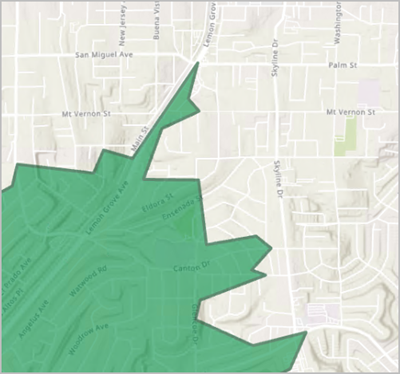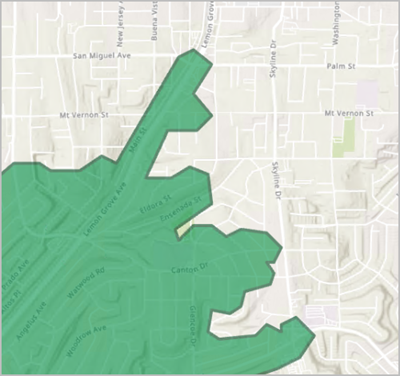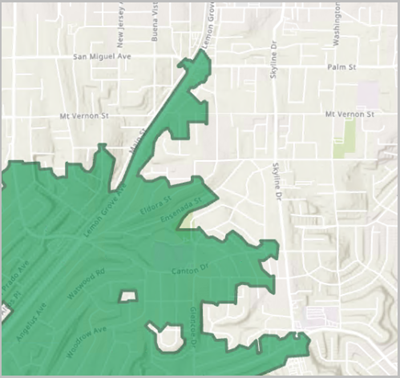Available with Network Analyst license.
A service area index generally provides improvements to a service area analysis by reducing processing time of the output polygons. This property can be accessed from the Network Dataset Properties dialog box and is checked by default. You can check or uncheck the check box to indicate whether to create a service area index. If the check box is unchecked and you choose to create the service-area index, check the Service-Area Index check box and rebuild network dataset.
Processing time
Generating service area polygons on a network dataset that has an index can be much faster than generating them on one without an index. In some cases it is up to 10 times faster. But an index reduces processing time only when the service area analysis you configure meets the following criteria:
- Hierarchy is not used. (See the Hierarchy section below.)
- The output polygons are of standard or high precision
Building a network dataset that has an index takes longer than it would otherwise; therefore, if you generate service areas more often than you build the network, including the index is a worthwhile option.
Hierarchy
When generating a large service area, using a hierarchy instead of an index tends to be faster. Many factors influence what constitutes a large service area, including the density and number of edges in the network dataset.. In general, though, a large service area for a road network is greater than or equal to a 60-minute drive time or 60-mile (97-kilometer) driving distance.
Hierarchical service areas are primarily measured along higher-order roads, such as highways, and their output polygons reflect that. If polygon quality is more important than processing time, you should choose to generate the service areas using the standard or high precision.
Polygon appearance
Service areas measure the reach of a facility along the network, so the most accurate output is line features, which follow along the network edges that are within reach. Creating polygons from the traversed edges is somewhat subjective because the network analysis doesn't measure off the network. The following series of images shows how output polygons differ.
Generalized polygons—Measurements largely ignore lower-order roads and focus instead on higher-order roads. Some of the local roads covered by the polygon cannot truly be reached.

Standard Precision polygons — These polygons have somewhat more detail. The quality improvements are especially noticeable on curved roads—the polygons follow the curves better.

High Precision polygons—The obvious difference between high-precision polygons and the others is that they contain holes where network edges exist but couldn't be reached due to a long, circuitous access road or, more often, restrictions that prohibit travel on those edges. For example, enabling a restriction to prohibit travel on private roads would cause the resultant polygon to have holes around private roads.

Trimming
The polygon trim settings don't affect the processing time of the analysis when it is referencing the service area index; however, your trim distance is always rounded up to the nearest twenty-fifth meter. If you set your trim distance to 40 meters, for instance, the actual trim distance will be 50 meters.